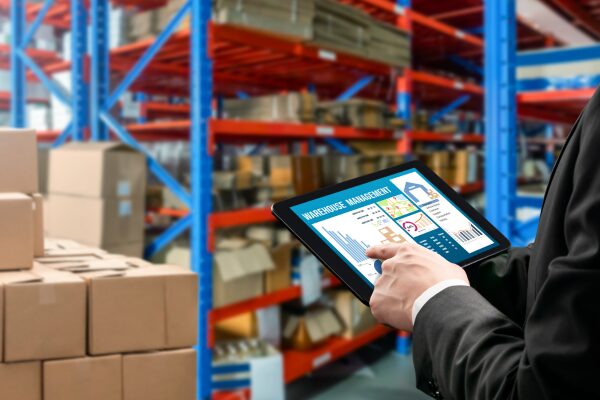EDI and ERP Integration: Best Practices, Benefits & Challenges

October 24, 2024
As businesses seek to automate workflows and streamline operations, EDI and ERP integration has become essential. By connecting Electronic Data Interchange (EDI) with Enterprise Resource Planning (ERP) systems, companies can eliminate manual data entry, reduce errors, and enhance efficiency.
If you’re new to EDI and its role in business, start with our Beginner’s Guide to Electronic Data Interchange.
This guide covers best practices for EDI and ERP integration, explores the benefits, and highlights potential challenges to ensure a smooth transition.
How EDI and ERP Work Together
EDI enables the automated exchange of business documents such as purchase orders, invoices, and shipping notices, while an ERP system manages internal business processes like inventory, accounting, and order fulfillment.
When EDI integration with ERP is implemented, data flows automatically between the two systems. For example, an order received through EDI is instantly reflected in the ERP system, reducing processing time and manual errors. This seamless data exchange is crucial for businesses handling high transaction volumes.
For a deeper look at how EDI improves operational efficiency, check out our article on How EDI Improves Supply Chain Efficiency and Vendor Management.
3 Key Benefits of EDI-ERP Integration
By integrating EDI with ERP, businesses can unlock several key benefits:
1. Automated Data Transfer
ERP and EDI integration systems enable real-time automation, reducing the need for manual data entry. This results in:
- Faster processing times
- Reduced human errors
- Streamlined order fulfillment
Looking for ways to automate financial processes? Learn about The Benefits of EDI for Financial Reporting and Accounting.
2. Enhanced Accuracy
With EDI automation, businesses can improve data accuracy by eliminating duplicate or incorrect entries. This is particularly useful for:
- Processing purchase orders and invoices correctly
- Ensuring accurate inventory management
- Avoiding costly shipping errors
Want to know how EDI ensures compliance and accuracy? Read about EDI Compliance and Security for UK and EU regulations.
3. Improved Efficiency and Cost Savings
By connecting ERP and EDI, companies speed up transaction processing, helping with:
- Faster order-to-cash cycles
- Better supplier relationships
- Lower operational costs
Curious about how EDI reduces waste and costs? Check out our guide about EDI and Sustainability to reduce waste in supply chains.
Common Challenges in EDI-ERP Integration
Despite its advantages, EDI and ERP integration can present challenges, including:
1. Compatibility Issues
Some ERP systems may not natively support EDI, requiring custom integration solutions. Businesses should:
- Ensure ERP and EDI integration system compatibility
- Choose a scalable EDI solution that supports future growth
2. Data Mapping Complexities
Every business uses different document formats, making data mapping a critical step. To ensure successful integration:
- Align EDI documents with ERP fields
- Conduct thorough EDI automation testing before deployment
For more insights into EDI document formats, explore EDI Standards Explained: ANSI, EDIFACT, and More.
3. Cost & Resource Allocation
While EDI-ERP integration leads to long-term cost savings, the initial setup costs and technical expertise required can be significant. Companies should:
- Select an experienced EDI integration partner
- Invest in EDI automation tools for a smooth transition
Looking for guidance on choosing the right EDI solution? Read Choosing the Right EDI Solution for Your Business Needs.
Best Practices for EDI and ERP Integration
To ensure successful EDI-ERP integration, follow these best practices:
1. Choose the Right Integration Method
Companies can integrate EDI with ERP in different ways:
- Direct Integration – EDI connects directly to the ERP system
- Middleware Solutions – A third-party tool manages data exchange
- Cloud-Based EDI Integration – Hosted EDI solutions connect with ERP systems
Each method has its advantages depending on business size, transaction volume, and IT capabilities.
Need help selecting an ERP system? Read ERP System Selection for Migration: How to Choose the Right ERP.
2. Implement EDI Automation Testing
To ensure smooth data transfer between EDI and ERP, businesses should:
- Conduct EDI automation testing before full deployment
Identify potential data mapping errors early
Set up error-handling mechanisms to prevent disruptions
Frequently Asked Questions about EDI and ERP Integration
Integrating EDI with ERP systems can seem complex, and many businesses have questions about its benefits, challenges, and best practices.
Below, we answer some of the most common questions to help you navigate the integration process effectively.
Can I integrate EDI with my ERP?
Yes, many modern ERP systems support EDI integration either through built-in capabilities or third-party solutions, making it possible to automate data exchange between the two.
What are the benefits of EDI-ERP integration?
EDI-ERP integration automates data transfer, reduces errors, and enhances efficiency by streamlining processes such as order fulfillment and inventory management.
What are the best practices for EDI and ERP integration?
Key best practices include: ensuring ERP and EDI compatibility, automating data transfer for efficiency, and conducting thorough EDI automation testing.
Should I use API instead of EDI?
EDI is best for structured, high-volume B2B transactions, while API is better for real-time updates. Many companies use both EDI and API for different business needs.
Integrating EDI with ERP systems is a game-changer for businesses looking to streamline operations, automate workflows, and improve accuracy. By following best practices for EDI and ERP integration, companies can overcome challenges and fully optimise their EDI automation strategy.
Want expert guidance on EDI integration with ERP? Talk to TrueCommerce today.
Share this post:
Categories
Stay ahead of the competition
Get expert supply chain insights delivered directly to your inbox weekly.